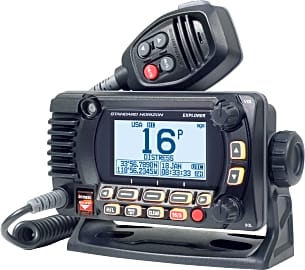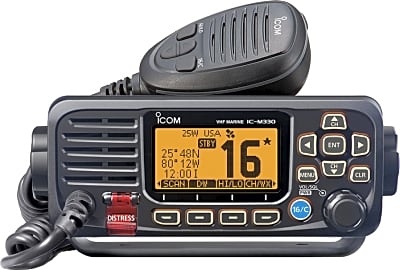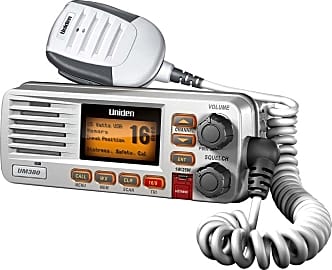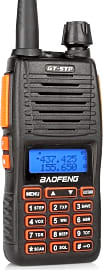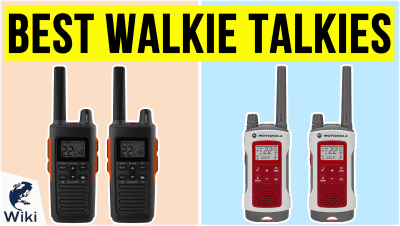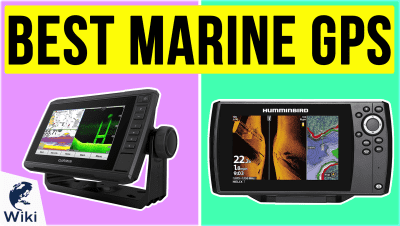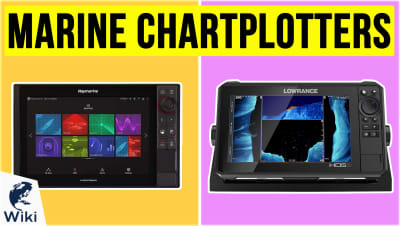The 9 Best Marine Two Way Radios

This wiki has been updated 42 times since it was first published in October of 2016. If you're heading out to open waters, make sure that you're equipped with the necessary equipment in case you need to call for help. These capable marine two-way radios will allow you to fire off alerts to notify others of your position in the event of an emergency via a VHF, UHF, or FM band, and are available in handheld, waterproof, floating designs as well as dash mountable options. When users buy our independently chosen editorial picks, we may earn commissions to help fund the Wiki.
Editor's Notes
January 31, 2020:
Due to both availability issues and its inability to interface with CHIRP software, we got rid of the Quansheng UV-R50. In its place we included the Garmin VHF 210, which is an excellent offering from a company perhaps better known for its GPS technology, but one that probably should have been included in previous version of the list. This model in particular, has an especially strong hailer to get the attention of passing vessels, which can be a big help in an emergency.
The Icom M36 saw an upgrade to the Icom VHF IC-M73, which isn't terribly different from is predecessor except for the new model's improved ergonomics, button layout, and screen resolution. Both offer six watts of power and good waterproofing, though the 73 is IPX8 to the 36's IPX7. The Icom IC-M330 is also a slight upgrade to the company's 324, with the new model's handheld mic featuring its own Ch 16 button to quickly switch the receiver over if it's out of reach.
Communication Is Key
Really, navigating any body of water calls for clarity in your comms.
No matter the relationship, whether you’re lifelong lovers or teammates on an Olympic speed skating relay, communication can make the difference between unbridled success and unbearable failure. There are certain situations and environments where communication is even more important, among climbers on a snowy mountain peak, for example, or when trying to convey a to a student the rudiments of CPR.
One such environment where clear communication is vital is the open sea. Really, navigating any body of water calls for clarity in your comms. May boats maneuver slowly, making the risk of impact on a foggy night high. There’s also a dearth of options for emergency response on the water, and being able to communicate your exact position to the coast guard or other rescue teams is paramount.
Outside the realm of safety, commercial fishermen and other professionals need to stay informed about channel closings and other changes to the laws governing their behavior. Many state fish and game departments regularly open and close fishing areas to protect the fishery’s health and population in the long term. Fishing outside of regulated periods can carry hefty fines or even result in the loss of a license. Communication with fellow fishermen and others on the mainland can keep you out of trouble.
You may read all this and agree, but also think that taking your simple CB radio on board is going to be enough to keep you in contact. If you’ve spent any significant time on the water, however, you know that that water gets everywhere. Just about everything you bring aboard a boat for more than a few hours at a time is liable to get wet. You’ll make your way through dense fog, high seas with waves taller than your vessel, and long nights of steady condensation, all of which wreak havoc on electronics.
Another hazard on the open water comes in the form of salt. Salt in any water that makes its way on board, as well as salt from the air, is incredibly corrosive to metal. Since most electronic, including radios, have plenty of metal components, this becomes a recipe for failure. Unless you plan to keep your landlubber’s CB locked up in a waterproof safe until you want to use it, you’re going to need a marine two-way radio.
The biggest differences between a marine two-way radio and a standard CB can be found in their frequency ranges and overall build of the former. At any point where water or salt might enter the frame of a standard CB, a marine radio is sealed against egress. It has more rubberized and plastic components than many CBs, as well, making it more resistant to corrosion.
What To Look For In A Marine Two-Way Radio
Choosing from among the many marine two-way radios on the market must seem like a daunting task. There are many models boasting wide varieties of features and specifications that may seen rather foreign to the untrained eye. We’ll endeavor to help you narrow down our list of options into a smaller number for your convenience.
There are many models boasting wide varieties of features and specifications that may seen rather foreign to the untrained eye.
The biggest dividing line between two large camps of marine two-way radios cuts along the variable of portability. You essentially have the choice between a handheld unit and a fixed-mount design. Both can be life-savers in times of emergency, but there are certain features that make one better-suited for certain situations over the other.
Handheld radios are preferred for their portability. These look and feel like walkie-talkies, and you can carry them with you anywhere on the boat. Many designs are both waterproof and buoyant, as well, so if you drop it overboard, you can retrieve it and it should still function. They have a somewhat limited range, however, topping out at around six watts. If you only take your vessel out a short distance from land, and use your radio for short-range boat-to-boat comms or to interact with the operators of locks and drawbridges, a shorter range might suit you fine. Just remember that you’re going to have to keep these charged.
Fixed-mount radios are popular among boaters who venture farther out to sea, as they can get up to 25 watts of power. That makes these model ideal if you need weather information, or to contact emergency services, from a considerable distance. Because they’re mounted in place, they can’t come with you around the boat, but they can draw power from the boat’s battery, meaning you never have to worry about charging them.
A Brief History Of Nautical Communication
It’s hard to imagine a world in which communication across water couldn’t happen along radio waves. We rely so heavily on technology to connect with one another that, if you dropped a millennial on a boat at sea and asked them to hail another vessel, they’d be in serious trouble.
Before radio communication, boats had to be able to see one another to communicate. If a ship were more than three or four miles away, it would largely dip below the horizon due to the curvature of the earth, making communication impossible.
If a ship were more than three or four miles away, it would largely dip below the horizon due to the curvature of the earth, making communication impossible.
From within visual range, ships employed everything from flags to semaphore to relay messages. Morse Code delivered through flashes of powerful lanterns became a common practice, especially at night when the colors and images born on flags would have been hard to distinguish.
After Hertz, the German scientist whose name graces the measurements of all radio frequency, published his first writings theorizing the ability for radio waves to carry communications, a slew of scientists and engineers sough to make this a reality. One of these first experiments actually happened aboard a ship, when Captain H.B. Jackson created a wireless communication system that reached from one end of his vessel to the other.
In more than 100 years since then, radio has gone on to transmit everything from our most beloved forms of entertainment to the first words mankind ever spoke on another celestial body. It may be a while before we have to rank intergalactic two-way radios, so grab one of these marine models to hold you over.


